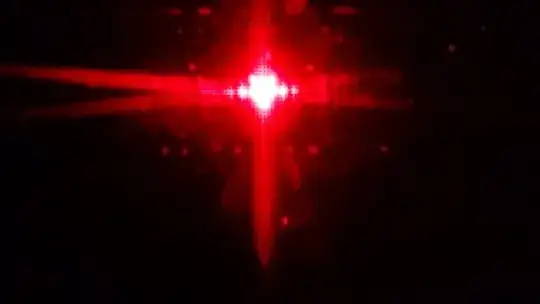I was up late working with my red LED headlamp on and when I was looking at the black part of my LCD (Apple Retina Macbook Pro) screen I noticed this interesting diffraction pattern. I'm confused because all I can think of that would cause this are Fourier and Fraunhofer patterns which I thought required more advanced optics the light to be collimated. One friend suggested it might be the polarizer. Any thoughts?
Unfortunately, the picture doesn't show this, but along the x and y axes there were discrete points not a continuous streak. Sorry for the horrible photo quality.
